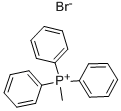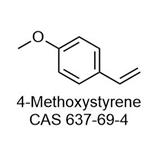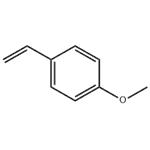Description
4-Methoxystyrene (Para-methoxystyrene) is an important chemical raw material, can replace styrene compounds, and is widely applied to various fields such as a light polymerization inhibitor, a material, a medical intermediate, a pesticide, an adhesive, a coating, a sun-screening agent and the like. Besides, the p-methoxystyrene can be used as a polymerization monomer to synthesize polymers with different structures, and the synthesized polymer contains a protecting group which is easily subjected to acidolysis by light so that the p-methoxystyrene can be used as an excellent corrosion-resistant material to be applied to the electronic information industry.
Chemical Properties
CLEAR COLOURLESS LIQUID
Uses
4-Methoxystyrene is employed in the ferric chloride-catalyzed addition of activated methylenes to styrenes. It acts as a monomer in polymerization reactions. Further, it is used to prepare 1,1,2,2-Tetracyano-3-(p-methoxyphenyl)cyclobutane by reacting with ethenetetracarbonitrile.
Synthesis
The current methods for synthesizing 4-Methoxystyrene mainly comprise:
P-methoxy styrene is prepared by taking p-methoxy benzyl alcohol as a raw material and reacting with triphenylphosphine, formaldehyde and hydrobromic acid through the Wittig reaction.
P-methoxyacetophenone is used as a raw material, reduced to 1- (4-methoxyphenyl) ethanol by potassium borohydride, esterified with excessive potassium bisulfate in cyclohexane to generate sulfonic acid-1- (4-methoxyphenyl) ethyl ester, and finally subjected to elimination reaction to obtain 4-Methoxystyrene.
In 2021, an invention discloses a method for synthesizing 4-methoxystyrene, which comprises the steps of using p-methoxyacetophenone as a raw material, firstly carrying out hydrogenation reduction to generate 1- (4-methoxyphenyl) ethanol, then carrying out dehydration elimination reaction to obtain a crude product, and finally rectifying to obtain the 4-methoxystyrene. The invention adopts a catalytic hydrogenation method to get the intermediate 1- (4-methoxyphenyl) ethanol. The reaction selectivity of the step is excellent and can reach 98-99%, and meanwhile, hydrogen is used as a cleaning gas so that environmental pollution is avoided and industrial production is facilitated.






